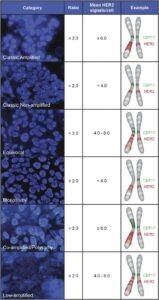Overview of Frontal Headaches
Overview of Frontal Headaches
Read Time: 5 mins
Frontal headaches, commonly experienced as tension or migraines, can be both painful and confusing to diagnose. Understanding the root causes and distinguishing between different types of headaches can help identify the best approach for relief.
Understanding the Causes of Frontal Headaches
When you experience pressure across your forehead, it’s often a sign of a frontal headache. These headaches can stem from a variety of causes, with two of the most common being tension headaches and migraines. Tension headaches are the result of muscle contractions or stress, while migraines tend to involve more intense, throbbing pain, often on one side of the head.
Tension Headaches: Causes and Symptoms
Tension headaches are the most prevalent type of frontal headache. They are typically described as a tight, band-like sensation around the head. This headache can radiate to the back of the head or neck, though it’s not often accompanied by nausea or other migraine-related symptoms. Many people can still function normally with tension headaches, although they can become more severe with stress, poor posture, or lack of sleep.
Migraines: A More Severe Headache
Migraines, which often start as a frontal headache, are more intense and usually involve throbbing pain on one side of the head. This type of headache may also cause sensitivity to light and sound, nausea, and vomiting. Migraine sufferers often need to take time off work or from social activities to manage their pain.
Common Triggers for Frontal Headaches
Various factors can trigger both tension and migraine headaches. These triggers include:
-
Stress
-
Poor sleep
-
Bright or fluorescent lights
-
Weather changes
-
Certain foods (like wine, cheese, and MSG)
-
Caffeine withdrawal
Avoiding these common triggers can help prevent headaches from occurring in the first place.
Cluster Headaches: Severe and Unpredictable
Cluster headaches are a rare but extremely painful type of headache that primarily affects one side of the head, often around the eye, temple, or forehead. These headaches are sharp, burning, or piercing in nature and are accompanied by autonomic symptoms such as:
-
Nasal congestion or discharge
-
Watery eyes
-
Constricted pupils
-
Swelling around the eye
Cluster headaches tend to occur in “clusters,” meaning they come in cycles, often lasting for weeks or months.
Sinus Headaches: Identifying the Symptoms
Sinus headaches are commonly mistaken for migraines because they also cause pain in the forehead area. However, sinus headaches are typically associated with a sinus infection and may be accompanied by symptoms like:
-
Fever or chills
-
Thick, colored nasal discharge
-
Worsening pain when bending over
-
Loss of smell and taste
A healthcare provider may use imaging tests like a CT scan or nasal endoscopy to confirm whether the headache is due to a sinus issue or another condition.
Hemicrania Continua: Continuous One-Sided Pain
Hemicrania continua is a rare and continuous headache disorder. The pain is typically one-sided and can occur in the forehead, temples, or behind the eyes. Unlike other headaches, hemicrania continua doesn’t stop; it can last all day, every day, without relief.
Secondary Headaches: When Other Conditions Are Involved
Some frontal headaches may be secondary headaches, meaning they are caused by other underlying medical conditions. These can include:
-
Cervicogenic headaches (related to neck problems)
-
Giant cell arteritis (inflammation of blood vessels)
-
Brain tumors
If your headache is associated with symptoms such as visual changes, speech difficulty, or muscle weakness, it’s crucial to seek immediate medical attention.
When to Seek Medical Attention
Most frontal headaches are not a cause for concern, but there are situations where medical attention is necessary. If you experience a new type of headache, a headache that lasts longer than usual, or headaches that are accompanied by neurological symptoms like numbness or confusion, you should consult a doctor immediately.
Key Takeaways
-
Tension and migraines are the most common types of frontal headaches.
-
Cluster headaches are rare but extremely painful and often require medical intervention.
-
Sinus headaches are frequently misdiagnosed as migraines, but they have distinct symptoms.
-
Secondary headaches caused by other medical conditions should be taken seriously and evaluated by a healthcare provider.
By understanding the different types of frontal headaches and their triggers, you can better manage your symptoms and seek appropriate treatment.
Frequently Asked Questions
What should you do if you suspect a sinus infection is causing your frontal headache?
If you believe your headache is linked to a sinus infection, seek a proper diagnosis from an ENT specialist. They may recommend imaging tests to confirm if you have a sinus issue.
Why do CT scans sometimes show mucus buildup but not reveal a sinus infection?
CT scans can show mucus buildup in the sinuses, but this doesn’t always mean you have a sinus infection. In some cases, the mucus buildup can be a result of another condition. A full evaluation is required to determine the exact cause of the headache.
Expert Tips
-
Keep a headache diary to track triggers and symptoms.
-
Avoid common headache triggers like stress and poor sleep.
-
Consult a healthcare provider if you experience sudden or severe changes in your headache pattern.








